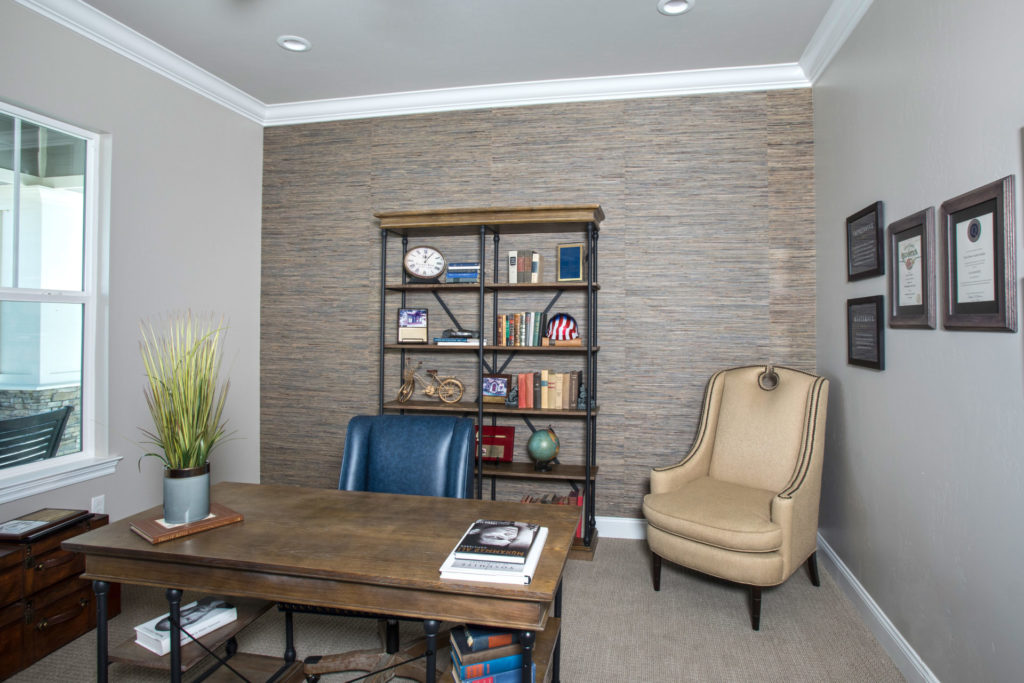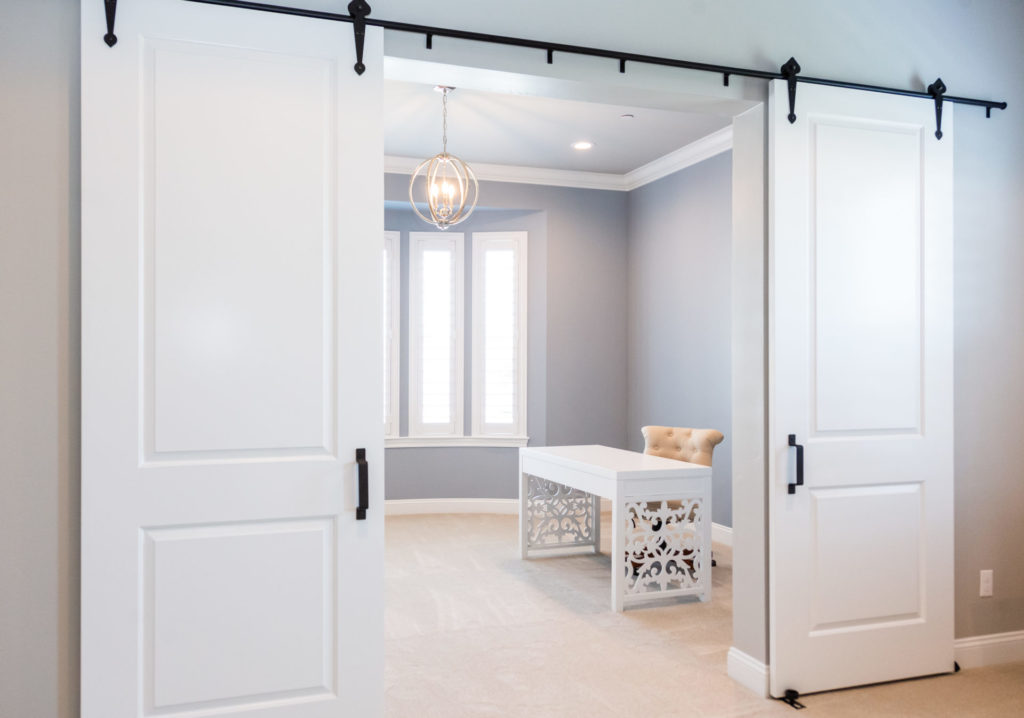Considering the ‘New’ Home Office
July 9th, 2020 | by dpcustombuilder | Posted in build process, living areas, new home comfort | #living areas
Societal trends are making this a must-have for many homeowners, but careful planning is the key to getting a space where you can be truly productive.
Remote work arrangements have been on the upswing for a long time. Research firm Global Workplace Analytics figured in 2019 that there were 4.3 million telecommuters in the US, or about 3.2% of the workforce. That was before a pandemic-related lockdown and nationwide civil unrest. Now, with even more individuals and companies seeing this as a viable solution, those same researchers project that up to 30% of us will be working at home at least part-time by the end of next year.
It should be no surprise that this trend is elevating the home office from an amenity to a must-have. A new custom home is a chance to create an office that’s functional, useful, even life-affirming—a space you will look forward to stepping into each morning, a space where you can feel like a CEO even if you aren’t one.
The home office is also a natural multitasker. Besides hosting your day job, it can offer the kids a quiet nook for doing school projects. It can even be laid out to double as a guest room.

Of course, those elements that make a good workspace are very personal. Your interior designer can help create an aesthetic that makes you more productive, organized and efficient than would ever be possible in a soulless corporate cubicle. But you will be more likely to gain that productivity if you work with your builder to create an infrastructure that supports it.
For instance, while most people understand the importance of natural lighting, not all light is the same. North-facing windows provide diffuse light, while light from the east, south or west will vary by time of day. There’s no right or wrong when it comes to window placement, but it’s a good idea to consider your preference when planning the office.
You will also want ventilation: bringing in fresh air and reducing carbon dioxide goes a long way toward keeping you alert. If you expect to spend long hours at your desk with the door closed, think about running dedicated supply and return ventilation ducts to the office, which is fairly easy to do in new construction.

While you obviously need plenty of electrical outlets, it’s best to place them so as to minimize exposed cords. That means thinking through the location of the desk as well as of items like printers, scanners, monitors and TVs. You will also want to decide where to charge devices like phones, tablets and wireless headsets. If you don’t like clutter, you can place electrical or USB outlets in a cabinet or drawer—some outlets are specifically made for in-drawer installation.
Then there’s data. The office needs data connections for the TV and computer. When it comes to WiFi, if the router will be in another part of the house, then running data wire to the office for a wireless access point will boost the signal. Some people also like having stereo speakers in walls or ceilings.
It can be helpful to collaborate with the interior designer and builder on the office floor plan to make sure it can accommodate all the features you want. For instance, if you want to hang some favorite artwork on the wall, they can help you decide where to put it before locating those outlets and built-ins. And if you plan on doing a lot of video meetings, they can help you create a backdrop that reinforces what you want people to think about you, whether it’s a wall of books or a painting that makes a bold statement.
The bottom line is that if you will be spending a lot of time in this space, you want to invest to make sure it’s perfectly suited to your needs. You will be glad you did.

